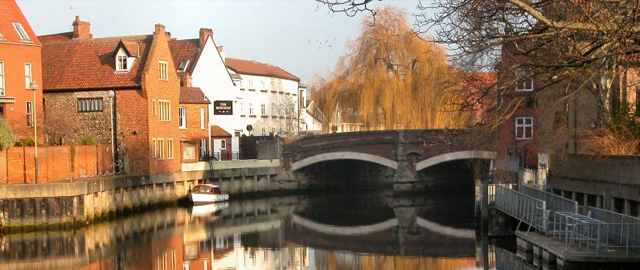Achieving Economies of Scale with Clean Energy Concepts

Hi, Aedan! Good to hear from you again. Sorry I never made it to see you in Norwich (England — pictured above and below), but you’re still on my list.
Here’s the problem with niche opportunities: they don’t have the opportunity to scale, and get whacked by those that do. I believe that solar, wind, and batteries are going to be so big in 10 years, the technologies so good, and the prices so low that nothing else will have a chance. That’s already the case with hydro: tidal, wave, ocean current, run-of-river, etc. One hardly ever hears of them today, where they were all over the place five years ago.
Having said that, you’re right: Iceland and geothermal were made for one another, as an example. There could still be an open window for ARES as well, but it’s closing quickly, I believe.


Hi Craig,
We may have lost contact but I like to keep an eye on what you are up to on 2GreenEnergy. It’s always interesting!
On the whole, I agree with what you say about economies of scale. I have no doubt that solar and wind will dominate.
The advantages of batteries are undeniable, though it is an expensive source of energy storage. I suspect that ‘flexibility’ will become an increasingly important issue. It will always be cheaper and more efficient to consume power when it is generated, rather than to generate it, store it and consume it at a later time. As the smartgrid rolls out, Nest-like products that take advantage of opportunities for energy flexibility in the home are an interesting area for innovation-watchers.
I looked at some research that found vast potential for flexible energy consumption in industry. The issue is that energy managers need to change their mindset:
http://www.leonardo-energy.org/good-practice-guide/wind-powered-industrial-processes
However, I also suspect that there will always be niches where a particular technology is the economic and sustainable solution. For example, at the moment our industries spend vast sums adding heat or removing heat as part of their production processes. Then that expensively created resource is simply dissipated – wasted. Surely that creates a competitive opportunity for energy storage as heat or cold?
Liquid air for instance is easy to store, much easier and cheaper to transport than compressed air, and because its volume will increase 700 times as it returns to room temperature, it can run an emissions-free turbine.
http://www.leonardo-energy.org/blog/5mw-liquid-air-energy-storage-demonstrator-nears-completion
Thanks. I’m flattered.
And you make some good points here. It will be interesting to see how this plays out. I have a new client in the flow battery space that seems to represent a real possibility for grid-scale storage.